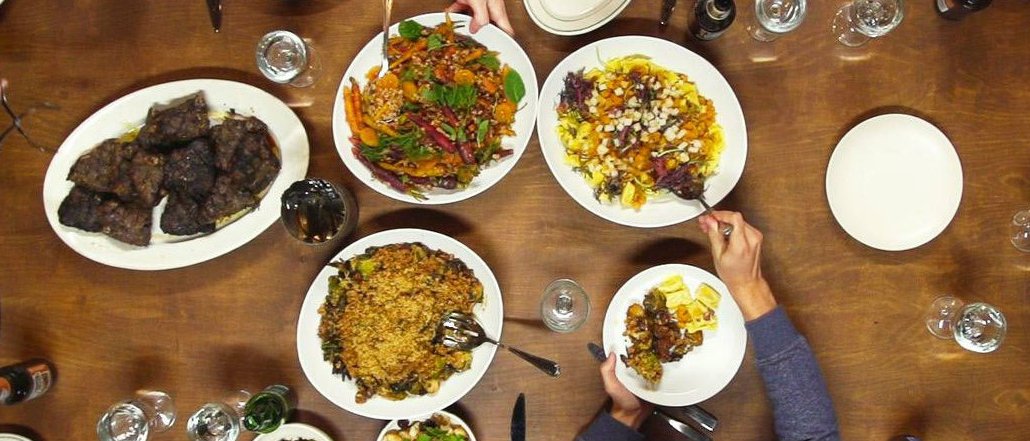Save 50% on a 3-month Digiday+ membership. Ends Dec 5.

More than 70 percent of Tastemade’s audience is international, without even trying. Now the digital network plans to expand its global footprint even further with localized channels in 2016.
Tastemade generated more than 1 billion views in January — and this is all on Tastemade-produced content, which it distributes on YouTube, Facebook, Instagram, Snapchat and Apple TV, among other platforms. Tastemade’s network of almost 200 creators contributed nearly 400 million additional views, according to the company.
After the U.S, Tastemade’s biggest market is Brazil — a close second. Its main Facebook page did 436 million views last December, meanwhile the Tastemade Brasil page was not far behind with 334 million, according to Tubular Labs. Tastemade Brasil was the only international page to land in Tubular’s top 10 for Facebook video views in December.
This year, Tastemade wants to replicate that success in 10 international markets, including Japan, Germany and Spanish-speaking countries.
“We started this company always knowing that it’s a global opportunity,” said co-founder Larry Fitzgibbon. “We’ve developed relationships in a lot of different parts of the world and are looking to activate those relationships.”
Tastemade plans to grow in new markets by employing the same distributed content strategy that’s helped it find an audience for its main channels here.
For instance, the Tastemade Brasil Facebook page, which has more than 6.1 million followers, is similar to the flagship Facebook page: Most of the videos are short recipe videos of local dishes. The videos have a high production quality to ensure the dish looks as appetizing as possible, and rarely run longer for than a minute.
On Instagram, where Tastemade has 478,000 followers and Tastemade Brasil has another 154,000, the content is pretty much the same. The videos are even shorter (15 seconds or less), with the recipes included in the caption. In December, the Tastemade did 706,000 Instagram views on its main account and 124,000 views on the Brazilian account, per Tubular.
YouTube is where the content is noticeably different. There, Tastemade publishes longer food and travel series and recipe videos to the tune of 4.1 million views in December across its main and Brazilian channels.
While Brazil accounts for a significant percentage of its overall views, Tastemade does not have a dedicated office there. Instead, it’s worked with a “small” group of creators from its network of 50 Brazilian video creators to create and program content for its Portuguese-language channels. With the region now well-established, the company intends to open an office this year, said co-founder Steven Kydd.
Kydd said he’s not likely to adopt the same approach the company used in Brazil for every new market Tastemade launches in. “That model has worked well for us in the past, and we’ll look to run that playbook again,” he said. “But each market is different, so we want to be open to all opportunities.”
Japan is the next step for Tastemade. The company already has local Facebook and Instagram accounts and will look to roll out on additional platforms, including YouTube, in the coming year.
Tastemade makes its money by selling ads on its YouTube channels, Snapchat Discover and its owned apps, as well as creating branded series for multiple social platforms. Kydd said the company has been able to expand this capability to Brazil and will aim to do more as it grows globally.
Another part of its global strategy will be to include more international talent on Tastemade’s main accounts. For instance, late last year, the company worked with one of its Brazilian creators, Danielle Noce, on creating food and travel videos for its Snapchat Discover channel. And Australian Guy Turland of Tastemade partner channel Bondi Harvest hosted “Sourced,” an original series shot last summer in which Turland travels around the world to find the best source for classic cooking ingredients.
“Our younger audience is interested in global perspectives on the topic of food and travel, and it’s a testament to the talent of the people in our company and network,” said Fitzgibbon.
Images via Tastemade
More in Media

TikTok Shop sheds bargain-bin reputation as average prices climb across categories
An analysis by e-commerce intelligence firm Charm shows average prices climbing across more than a dozen key categories.

Ad Tech Briefing: The Programmatic Governance Council is a bid to reset power dynamics
As tensions over TID and GPID peak, Tech Lab is convening a council to hash out commercial ground rules.

Newsweek is building an AI Mode-like experience to customize homepages for readers
Newsweek is building an AI homepage modeled after Google’s AI Mode to increase engagement and offset declining search referrals.





